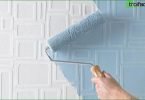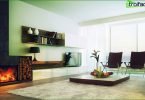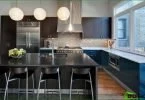50 photos of sliding interior doors. We will show you which designs exist and which material is better to choose. We will tell you about all the pros and cons and how to make such doors with your own hands and install them yourself.
Interior doors can be the most unusual! But the main trend of our time is sliding. How to make interior design stylish, original, special with this element – look at our photos.
Content
Advantages and disadvantages of using sliding doors
The door system in which the canvas (i.e. the main part) opens along the wall is called a sliding.
The sliding door system was borrowed by the designers from the Japanese. This is not surprising, because in Japan, where an incredibly small territory and high population density, every square meter is worth its weight in gold.
Despite the originality and unusualness, sliding doors are firmly included in our everyday life. There are a number of good reasons for this, which are the key advantages of using sliding doors:
- Unlike swing doors, which occupy at least one square meter of usable space, sliding doors do not need additional space. Thanks to this, even the smallest apartment will become as comfortable and roomy as possible..
- The number of paintings in a sliding door system can vary from one to several, which can not only become an unusual element of interior design, but also an excellent option in terms of functionality, because it’s much easier to control and adjust the width of the doorway with such a door system than with swing doors.
- Sliding doors can serve not only as doors, but also as a multifunctional partition between rooms or zones. Sliding interior partitions are very relevant for owners studio apartments or one-room apartments, where, on the one hand, one does not want to reduce and divide the area of the room, and on the other, one way or another, there is a need for personal space for each family member. At least for a while.
However, like every medal, sliding door systems have some disadvantages:
- Sliding doors save space near the doorway (forward or backward), however, it is critical that there is space on the sides of the doors so that the doors can be pushed back. This space is called parking. Without space for “parking” the door leaf (for example, at the end of the corridor), the sliding system simply cannot be installed. Even if parking spaces are hidden in the wall, it is not recommended to install such structures in the bearing and adjacent walls of the neighbors.
- Sliding doors move on rails and rollers, so it is almost impossible to open them without accompanying sounds and noise. Therefore, it is better not to install such doors in the bedrooms of owners of sensitive sleep, and especially in children’s rooms.
- Prices for sliding door systems are an order of magnitude higher than for standard swinging structures due to the cost of the sliding mechanism (especially if it is of high quality).
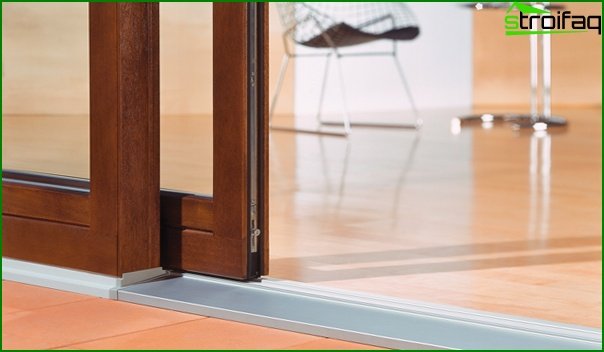
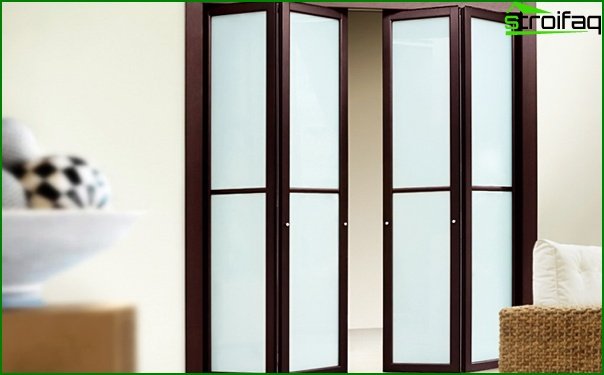
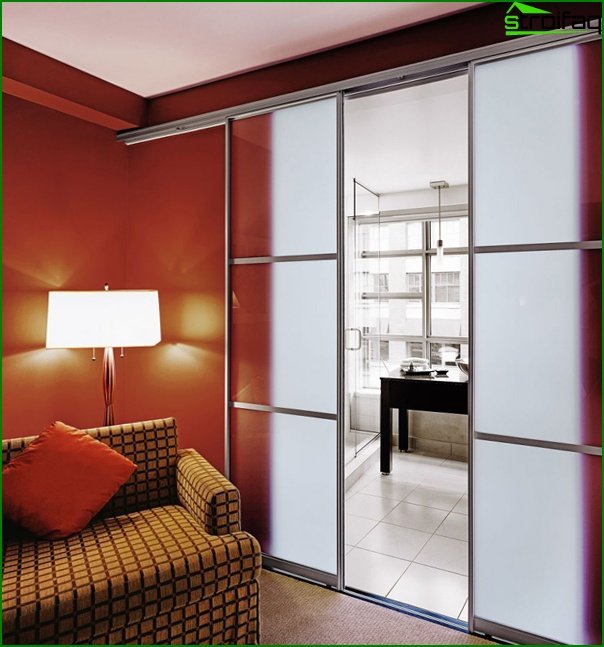
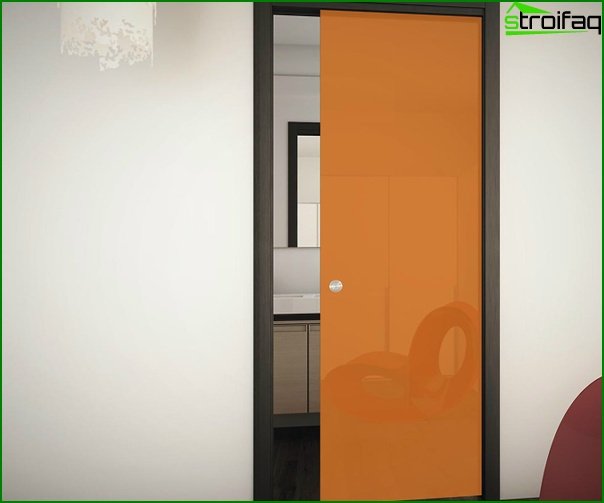
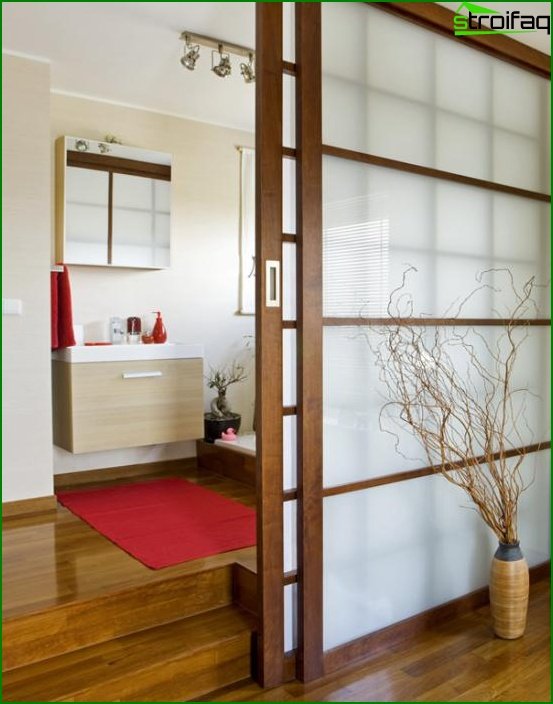
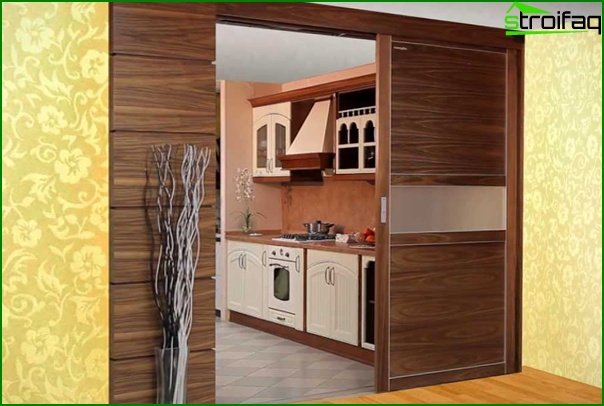
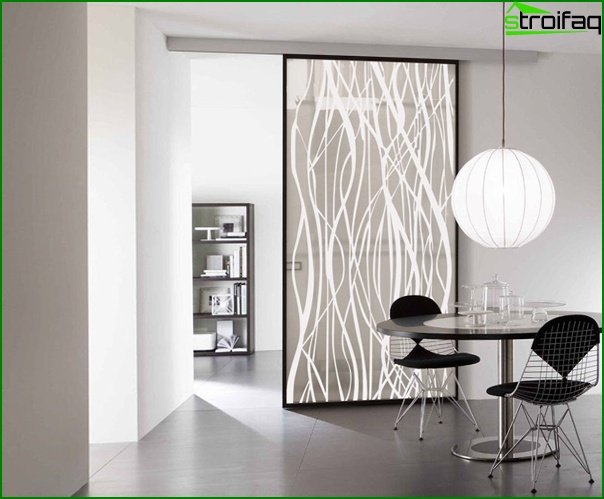
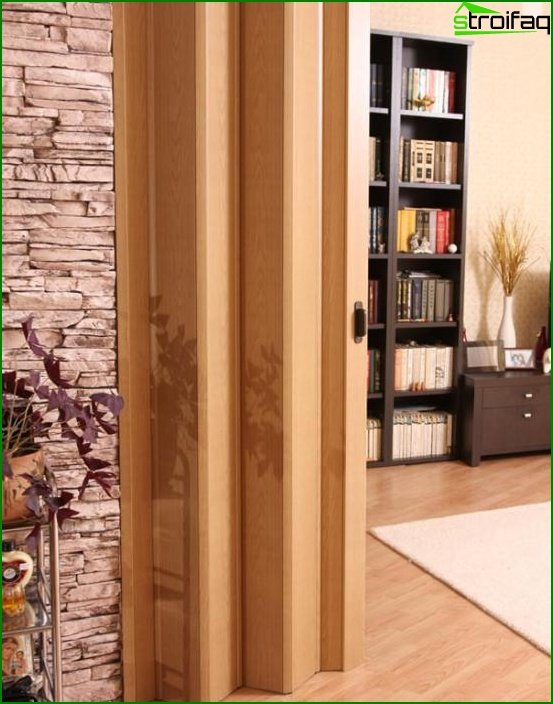
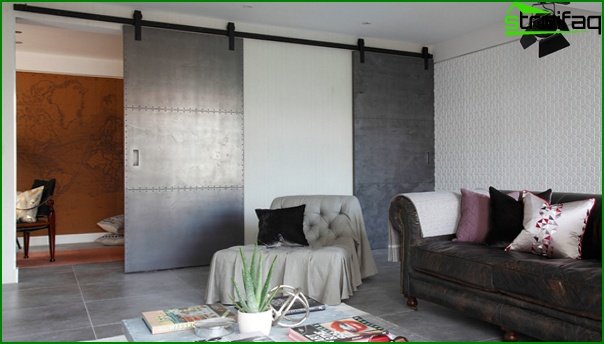
Types of designs of sliding door systems
Standard
Standard sliding doors are a structure that is installed in the doorway. The door leaf does not swing open, but is pushed to the side and fixed near one of the walls.
Standard sliding doors come in two main types:
- Single leaf (with one movable canvas)
- Double leaf (with two movable sheets)
The first option will be convenient for small rooms with tiny doorways.
If you need to install a door between two small rooms or a room and the corridor, in which every square meter matters, single-leaf sliding door systems will be your ideal option.
The second option is more suitable for spacious spaces with wide doorways. Thanks to this design, you can independently adjust the size of your doorway (which is very important not only in terms of functionality, but also the visual perception of the room as a whole).
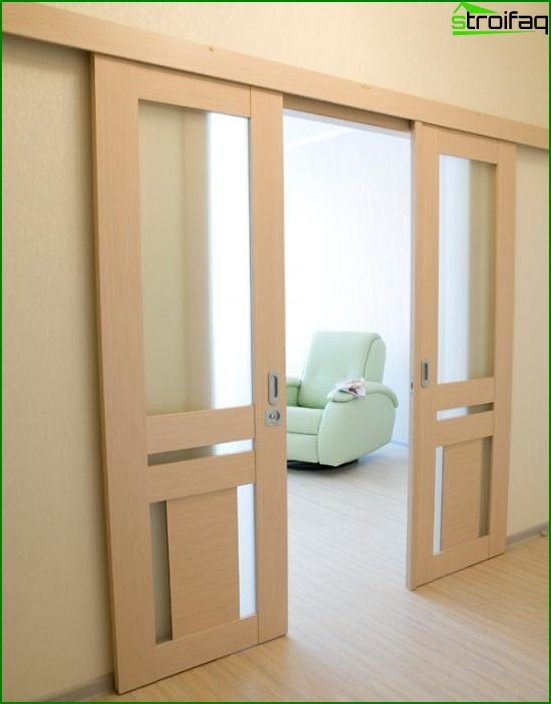
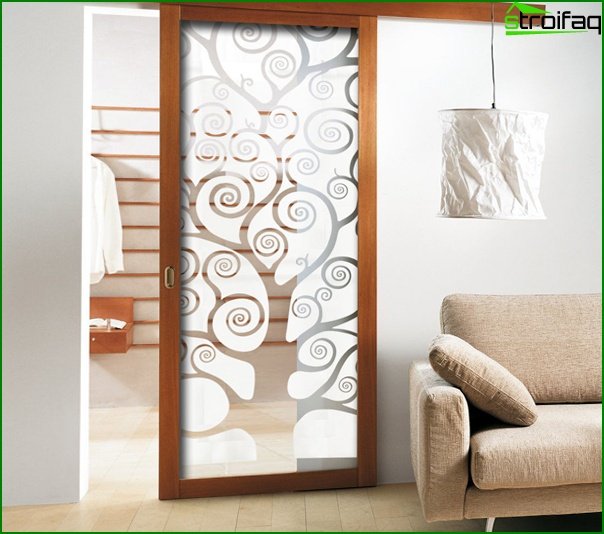
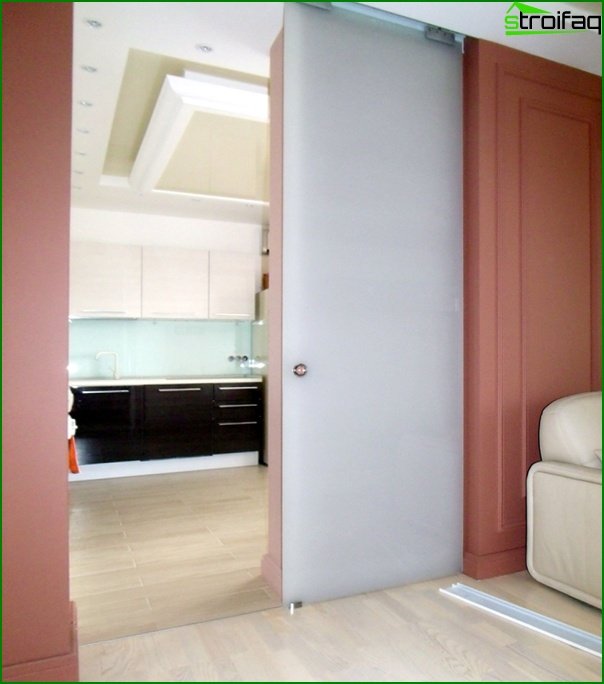

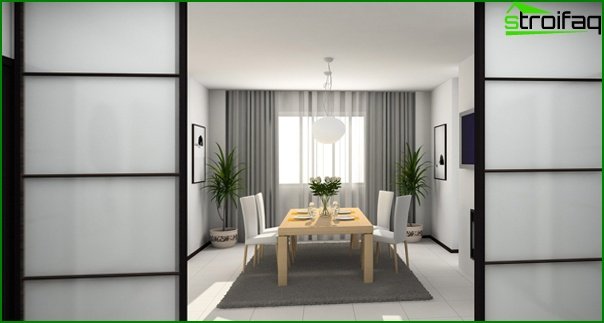
Radius
The radial design of sliding door systems suggests that the door leaf is not moved in a straight line, but in a circle. This option fits perfectly into the non-standard layout of the room, in which there are round or curved walls.
Radius structures are good to use as stylish sliding partitions for zoning the space in the room. This will be especially appropriate when creating an interior in the styles of hi-tech, minimalism, fusion.
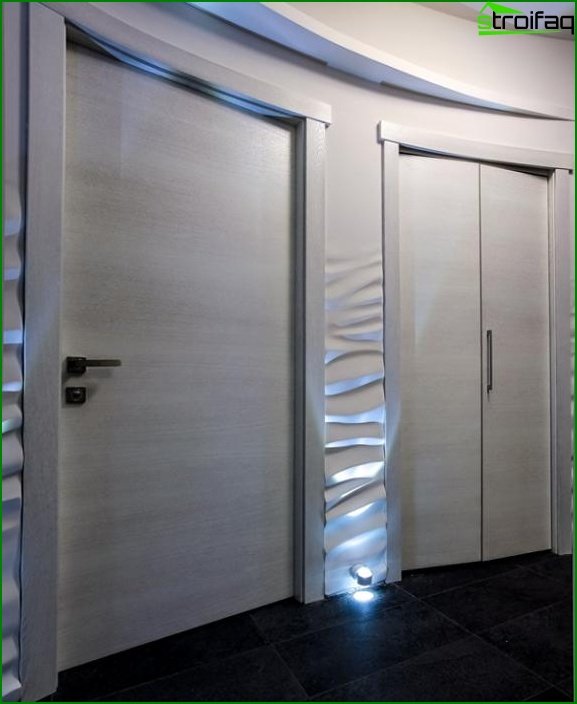
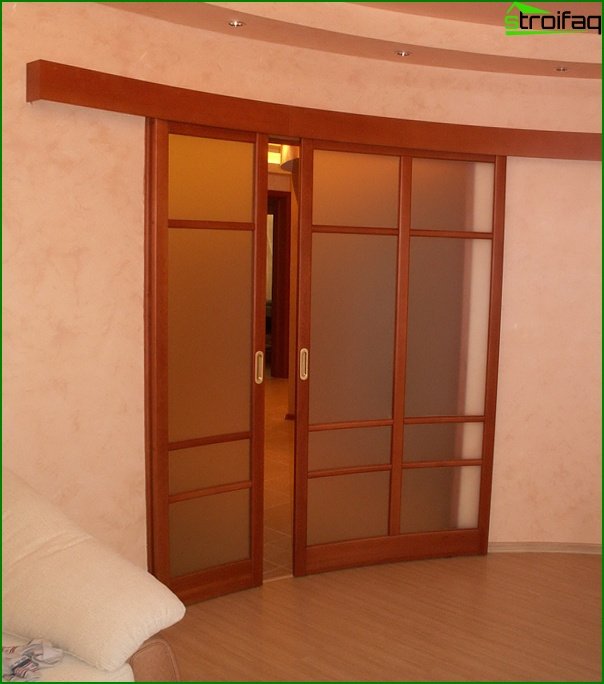
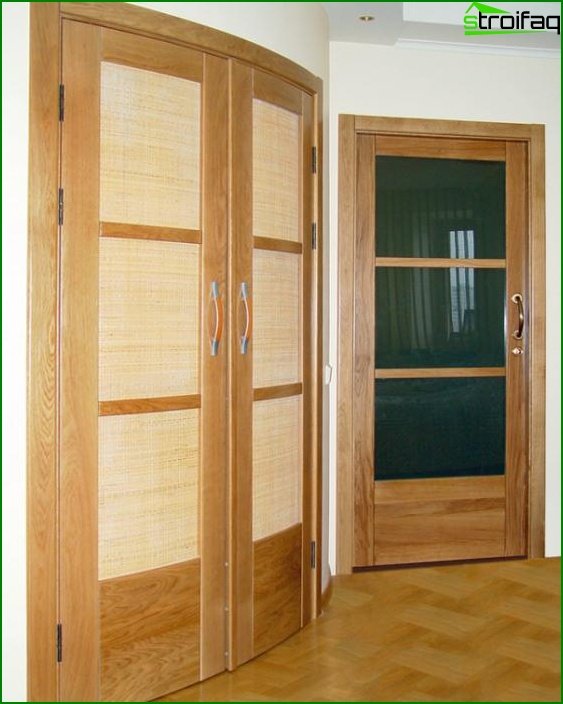
Harmonic
The accordions (or, as they are also called, folding interior doors) are a construction of several relatively narrow canvases that do not move away, but fold (see photo below). The beauty of this design lies in the fact that the width of the doorway when using it varies from a narrow click (for example, so that a cat can slip into it) to a full spacious passage.
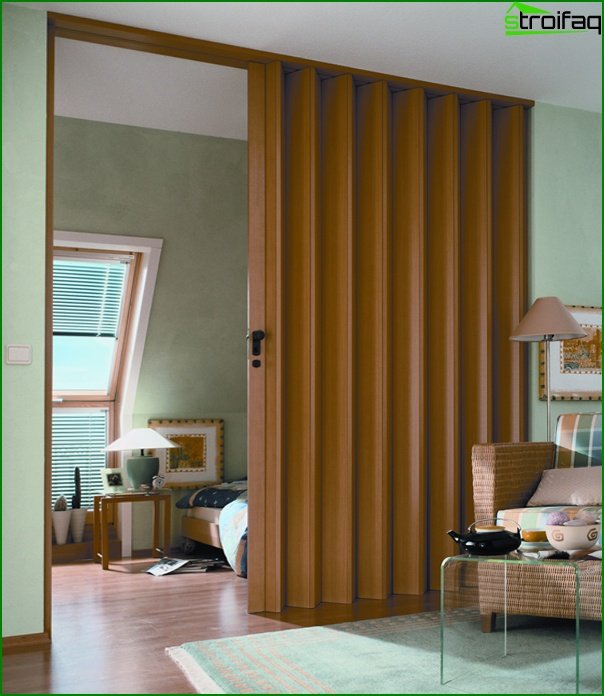
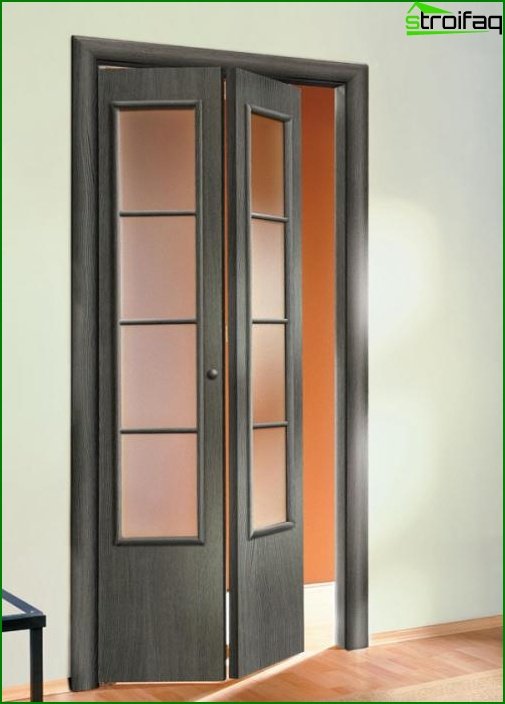
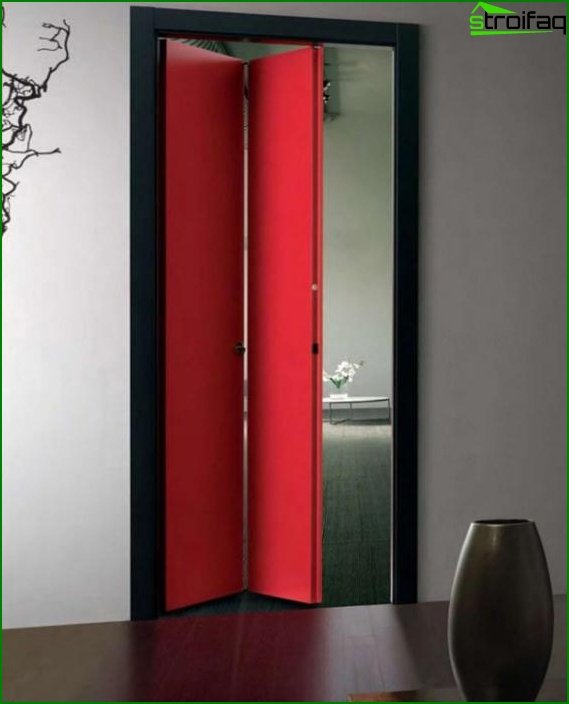
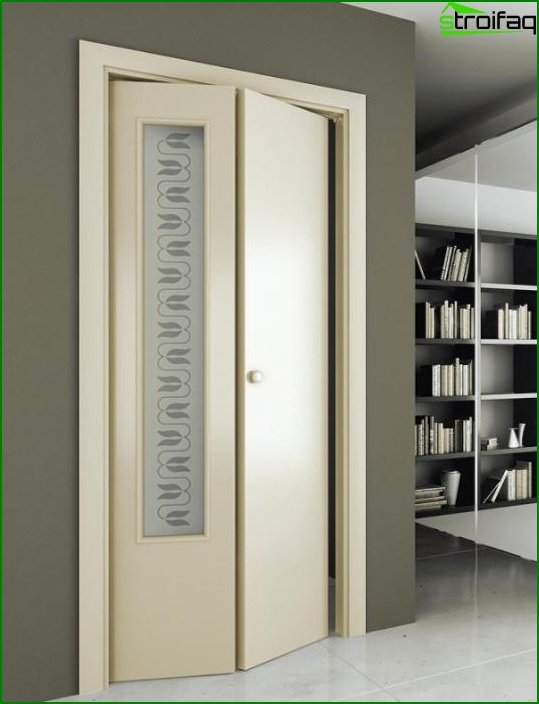
Coupe
Sliding sliding doors differ from the standard ones in that the design occupies not only the doorway, but completely replaces the wall. On the one hand, depending on the materials used, this allows you to divide a room into two separate functional areas without strong visual hiding of the space, and on the other hand, create two or more comfortable personal spaces for each family member in a studio apartment or one-room apartment.
Branch the kitchen in the studio apartment with the help of sliding compartment doors will prevent the spread of odors and steam from the cooking zone throughout the room.
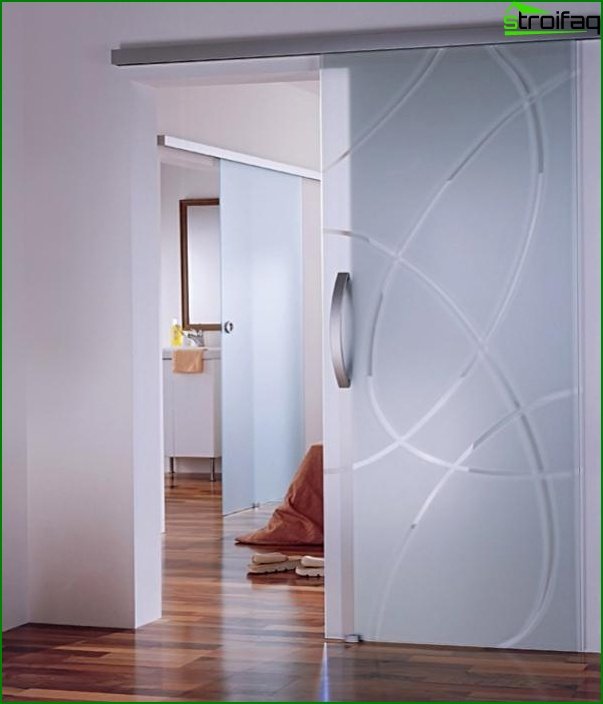
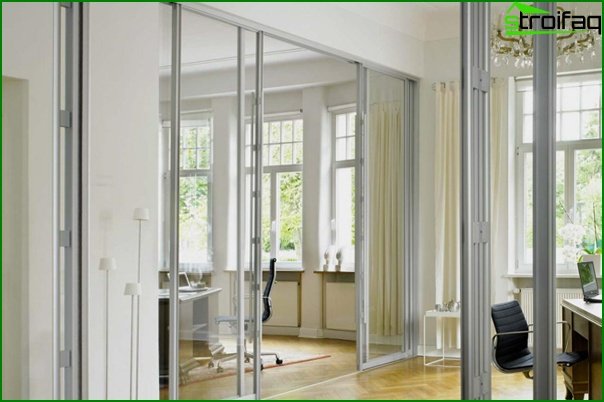
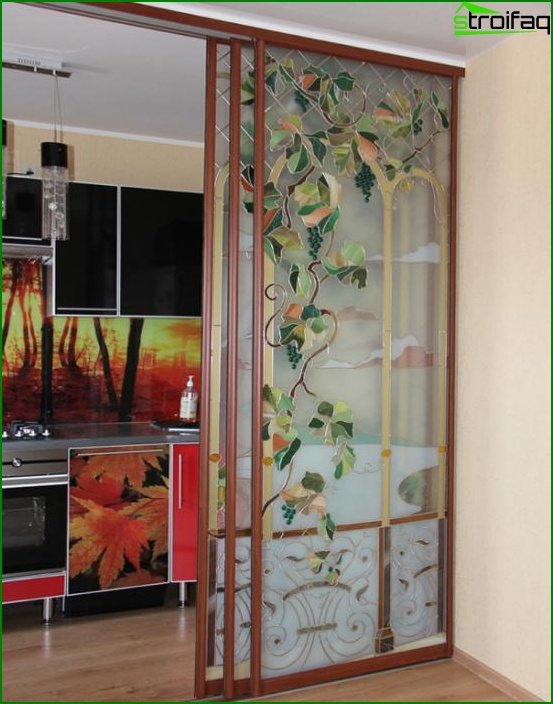
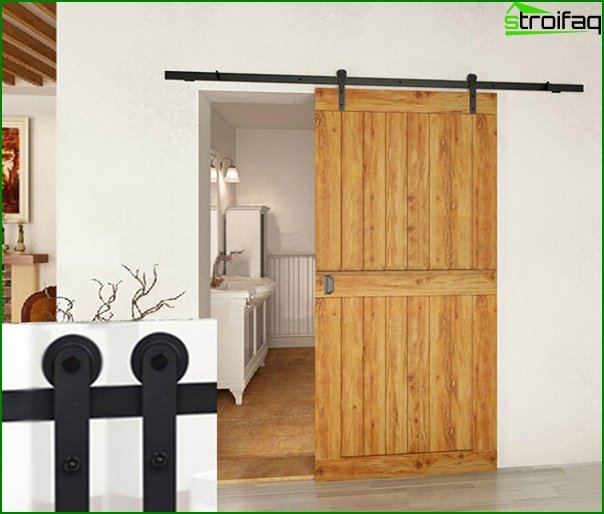
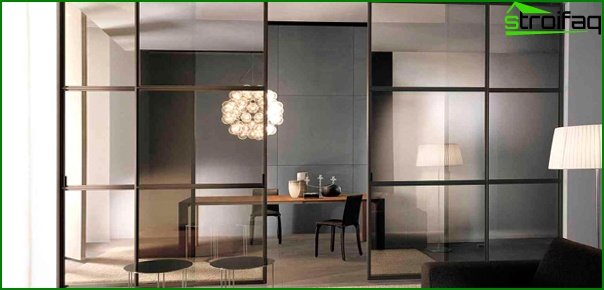
Materials for Sliding Doors
The most popular materials for the manufacture of sliding door systems today are:
- Wood
- MDF or MDF
- Glass
Wood
The traditional material for the manufacture of not only doors, but also furniture in general, is wood. At the same time, both the full canvas (s) of the sliding door system and the frame for combination with other materials can be made of wood:
- Glass
- Plastic
- Paper
- the cloth
- Mirror
The easy flexibility of the wood allows it to be used for interior decoration in almost any style. Want a charming country room? Use unplanered wooden boards! Do you like the classic interior? Choose a wooden door leaf of strict forms. Strive to create an interior in the style of shabby chic or art deco? Give preference to a carved tree with wrought iron elements or inlay. Are you a follower of the east? Use canvases with a wooden frame and rice paper inserts.
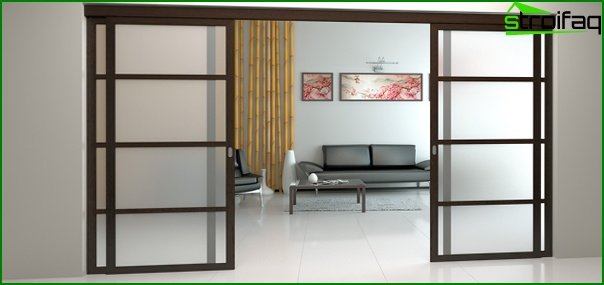
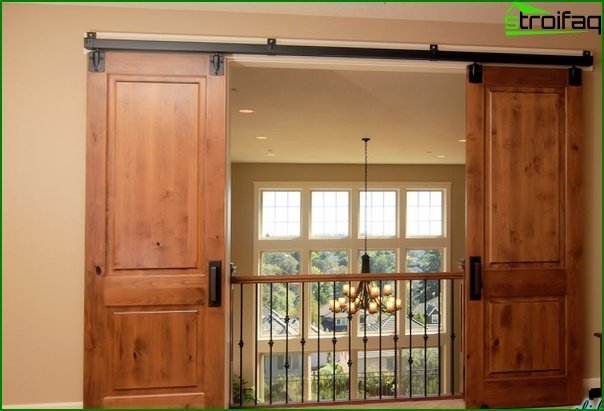
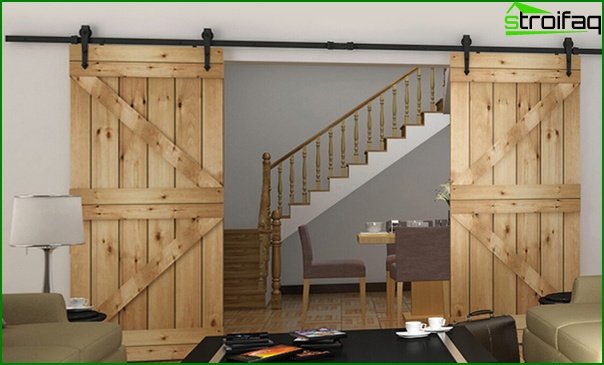
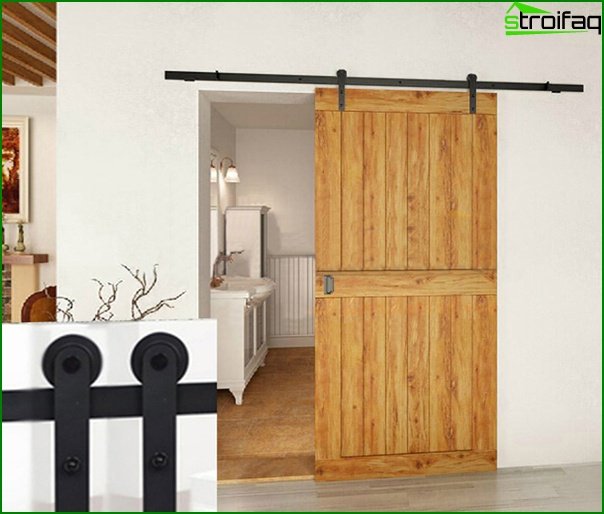
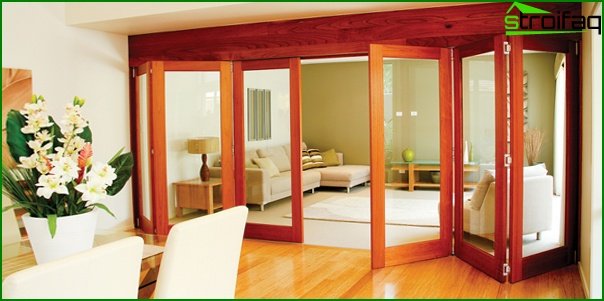
Fiberboard / MDF
Since wood is not the cheapest material, it can be replaced with materials such as fiberboard or MDF. In appearance they are almost impossible to distinguish from natural wood, but the cost is an order of magnitude lower than that of similar products from natural wood.
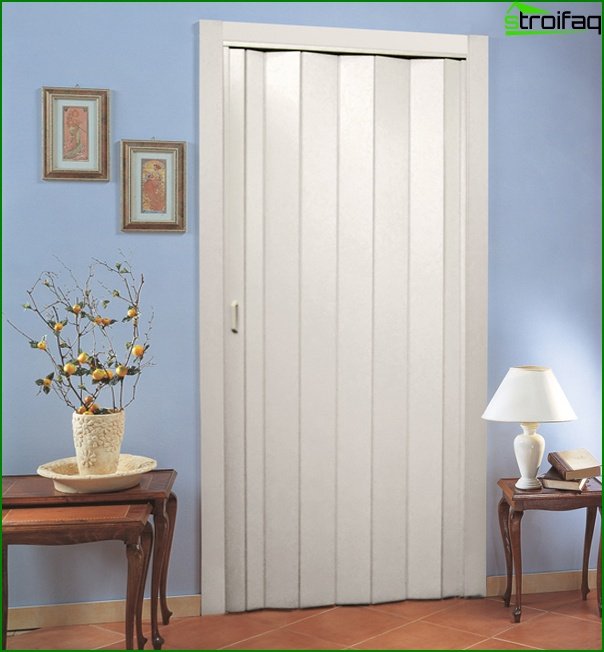
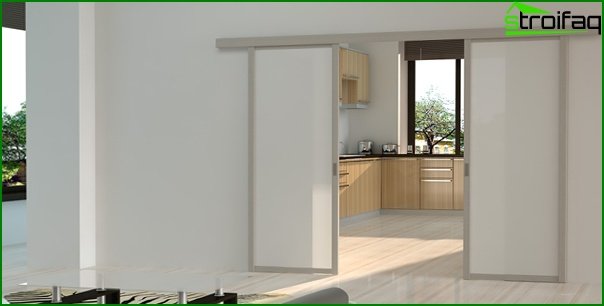
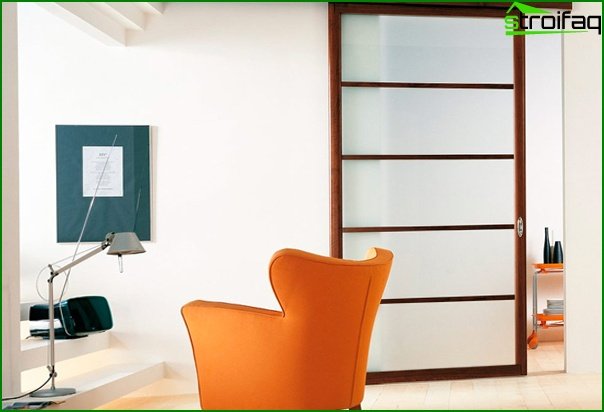
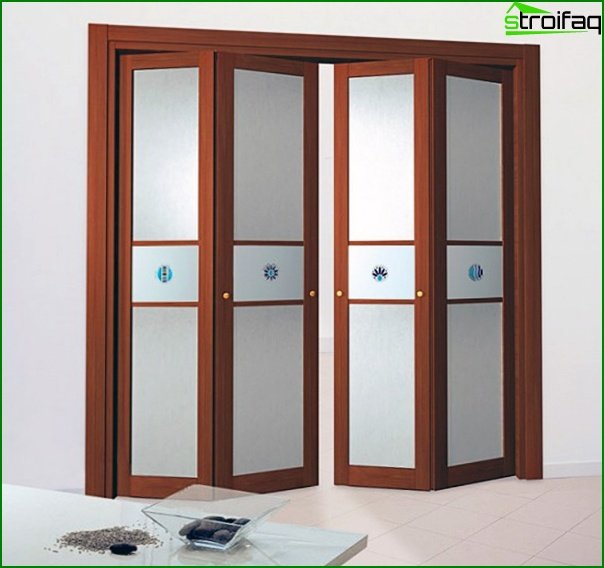
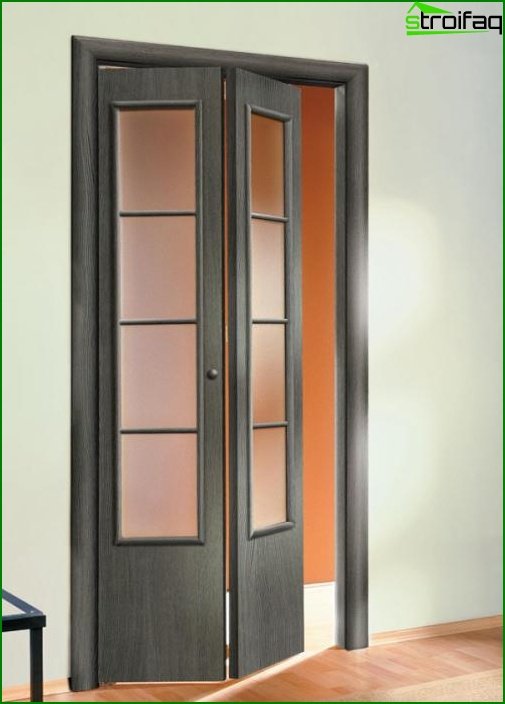
Glass
Glass sliding doors are an excellent option for creating an interior in the styles of minimalism, futurism or high-tech. Due to the property of glass to transmit light, glass interior sliding doors do not create a feeling of total enclosure of space. Moreover, choosing the degree of color and clouding of glass for the door leaf, you can choose the degree of transparency (and as a result – integration with the adjacent room) of interior doors.
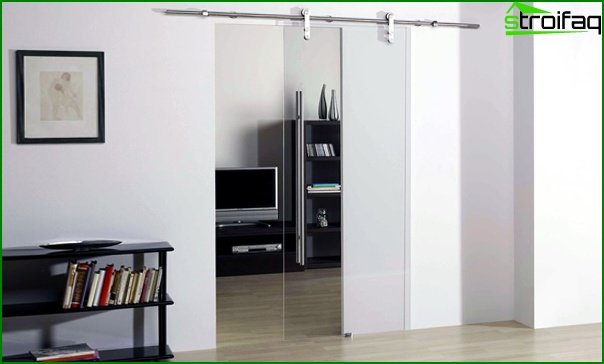
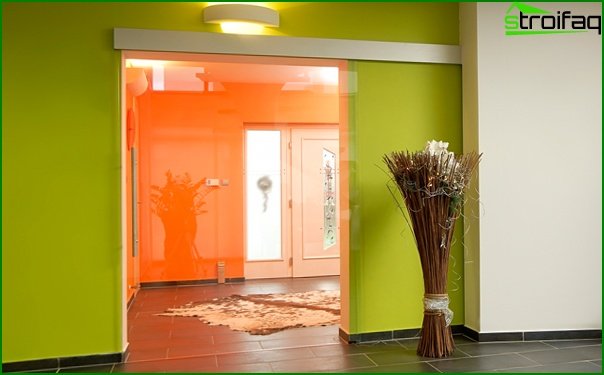
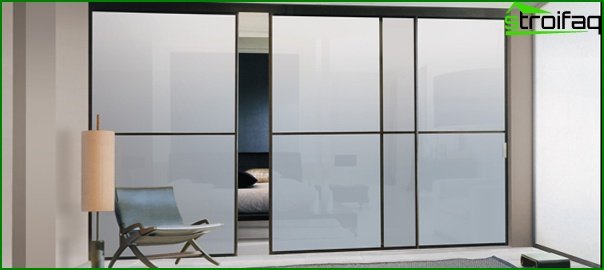
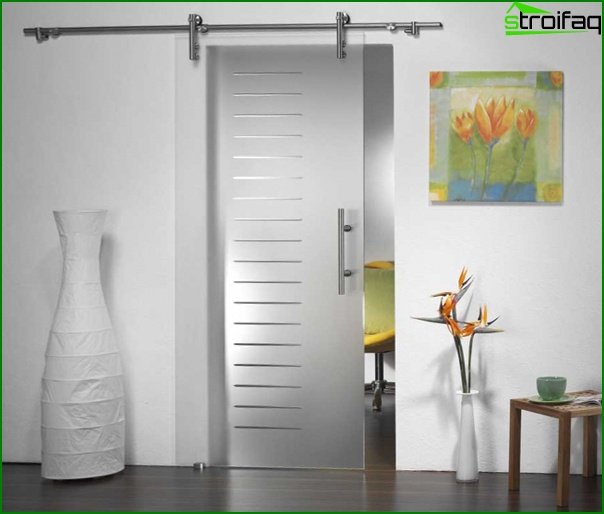
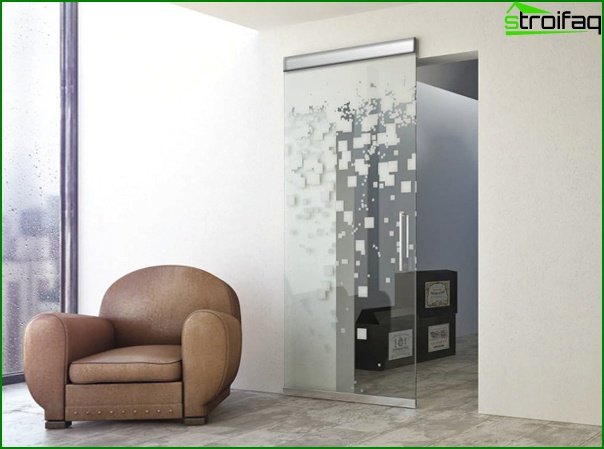
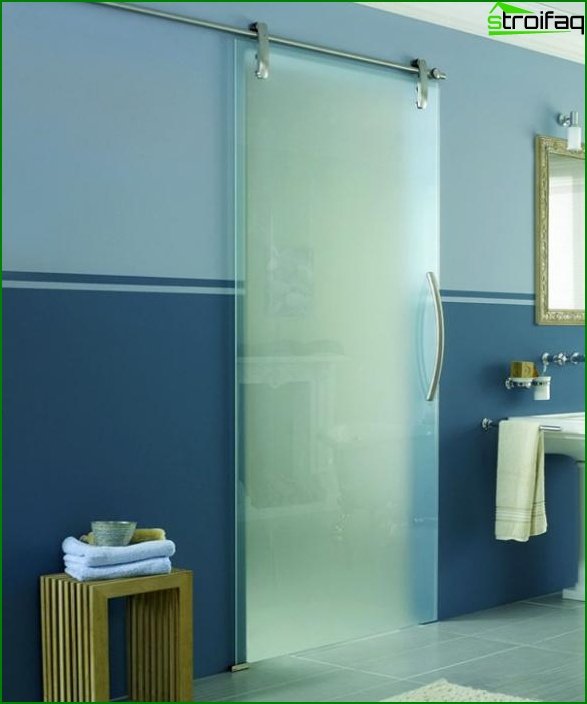
Sliding interior partitions
The versatility of sliding door systems allows them to be used not only as doors in doorways, but also as an element of zoning space. The most common use of zoning in the interior is zoning of studio type apartments and one-room apartments. In this case, it is more likely an obvious need than a design decision. However, sliding partitions can be used in other cases:
- If in one kids room heterosexual children live or fly of different ages, then with the help of a sliding partition you can make two smaller ones from one large children’s bedroom.
- If you want to organize a dressing room in your apartment or house, and there is no special room for this, then with the help of a sliding partition you can separate a part of the bedroom for these purposes.
- A large kitchen can act as not only a functional working area for cooking, but also a full dining room. The use of sliding partitions will prevent the spread of odors in the kitchen from the cooking zone, and will also hide from the prying eyes the “production costs” in the form of dirty dishes, garbage and other things.
- It will be appropriate to use sliding partitions not only in residential premises, but also in offices to divide the workspace of different employees or the manager’s office and, for example, a meeting room.
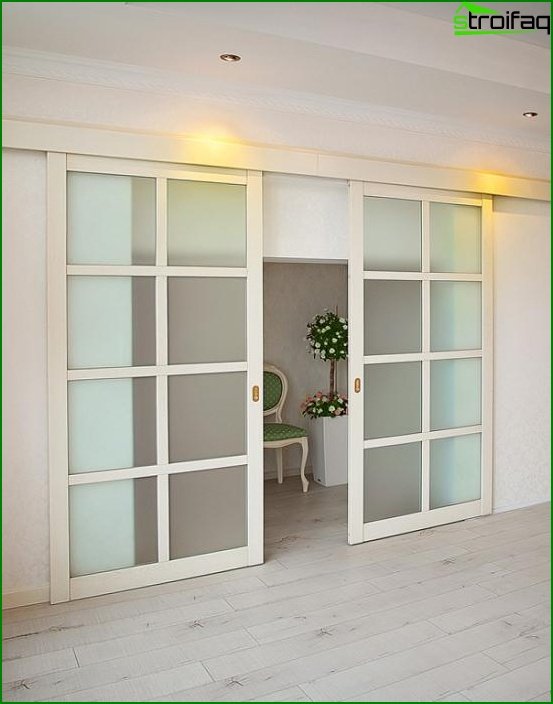
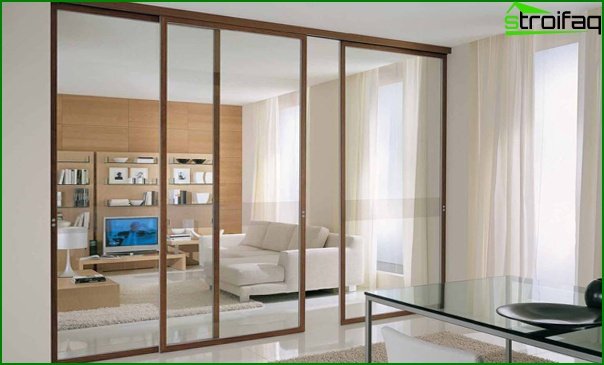
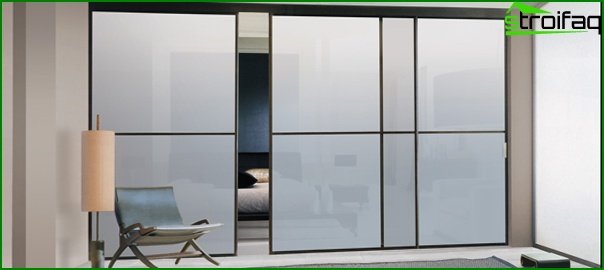
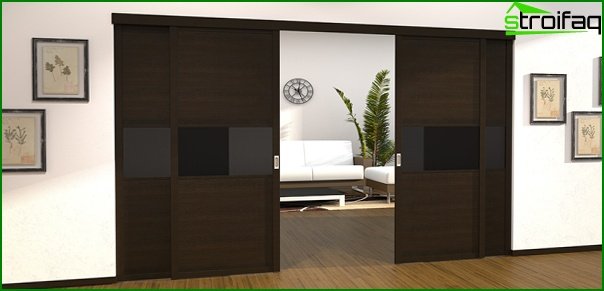
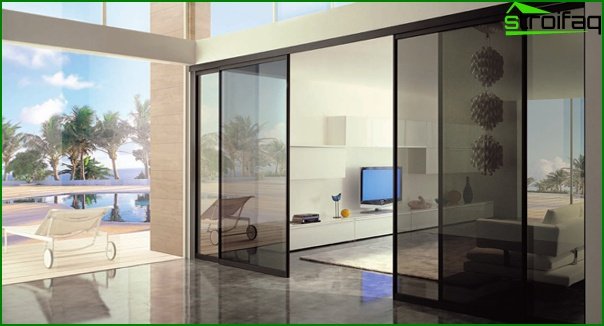
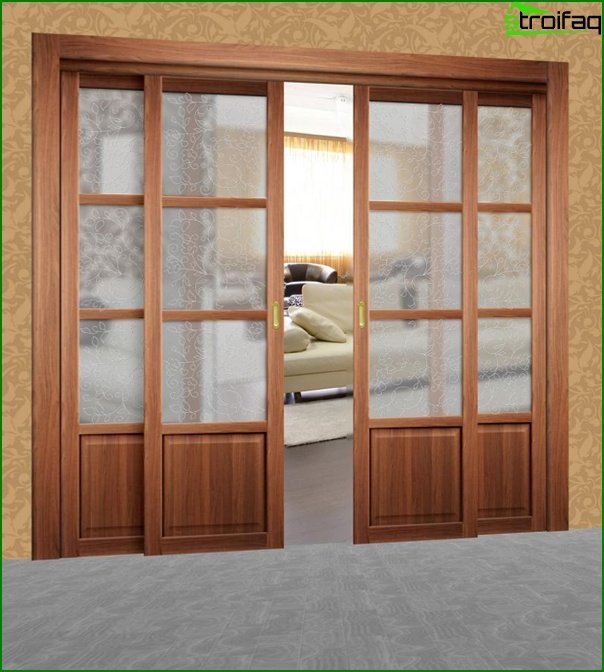
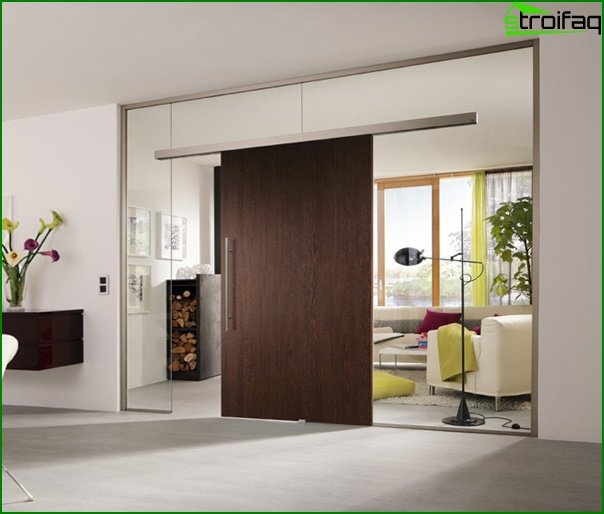
Creating and installing do-it-yourself sliding door systems
Thanks to a wide range of products from manufacturers of building (and not only) materials, almost all stages of repair and future interior elements can be created and installed with one’s own hand. And the Leroy Merlin online store will help in this, where you can familiarize yourself not only with the available range of materials, but also with their main characteristics.
First of all, decide what type of installation you will use. There are two types of them:
Overhead. In this case, the guides and rollers are installed on the wall, outside the doorway. This option is easier to install, but remember that door leafs will always be visible.
Built in. In this case, the sliding mechanism is mounted inside the doorway, and the canvas is pushed into niches in the walls. This option is more compact, however, a beginner will most likely not be able to cope with it..
Having decided on the type of installation, you can think about the type of design of the sliding door system and the material from which it will be made. As mentioned above, the main types of designs of sliding doors include standard, radius, cascading (accordion) and coupe.
After the appearance of the future door is thought out and selected, it is necessary to measure the height and width of the installed structure and make markings for the superimposed mechanism.
| Door leaf height (finished or cut according to the height of the doorway) | 1-2 cm (so that the door does not cling to the floor) | Assembled roller height |
Partitioning should only be done with a water level, otherwise your doors may be skewed!
Following is the direct installation of the guide mechanism. The mounting method depends on its design, so it is advisable to check with the consultant all the nuances of the installation.
Some designs require the installation of a guide not only from above, but from below. In this case, the door leaf will completely occupy the space from the floor to the ceiling and the door’s ability to isolate noise and extraneous sounds will increase significantly.
After guides are reliably fixed, rollers are installed in them. For each canvas, depending on its width, one to three rollers will be required. The edges of the guides are locked with a bracket (so that the rollers do not fly out).
The next step is screwing the door leaf to the rollers and installing the door hardware. All! The door is ready for use..


